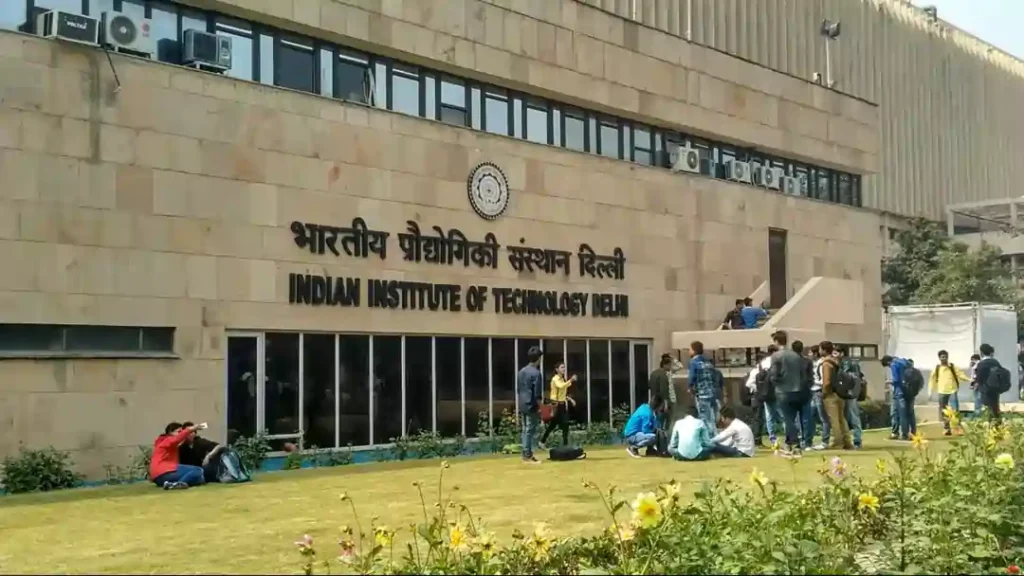New Delhi: Indian higher education reached a new milestone in the QS World University Rankings: Asia 2026, with 294 institutions earning spots on the list, up from just 24 in 2016. This dramatic growth reflects a decade of focused expansion, yet the celebration is tempered by a changing regional landscape where China now commands the top position with 395 universities. The latest rankings, unveiled by QS Quacquarelli Symonds in London, cover 1,529 universities continent-wide, including 557 newcomers.
For the fifth year running, IIT Delhi stands as India’s highest-ranked institution at 59th in Asia. Joining it in the top 100 are IISc Bengaluru at 64th, IIT Madras at 70th, IIT Bombay at 71st, IIT Kanpur and IIT Kharagpur sharing 77th, and Delhi University at 95th. These seven entries match last year’s count, but every one of them lost ground compared to 2025 positions.

Surge in Numbers Meets Stiffer Regional Competition
India welcomed 132 additional universities into the rankings this year, including 137 first-time participants. China, however, outpaced this effort by adding 259 institutions, 261 of which are new to the list, bringing its total to 395. The overall tally of ranked universities settled at 1,529 after initial reports cited 1,526.
Within Asia’s elite 100, China holds 25 places, followed by Japan with 15 and South Korea with 12. India’s seven representatives showcase concentrated strength in flagship technical and research bodies, but the broader trend shows relative decline. IIT Delhi fell 15 spots from 44th, while IIT Bombay recorded the steepest drop among top Indian names, sliding 23 positions from 48th to 71st.
Absolute performance scores for Indian universities actually rose compared to the prior year. The downward shifts result from faster gains by institutions in East and Southeast Asia. Among the 157 Indian entries from 2025, 105 experienced rank drops, accounting for 67 percent. Meanwhile, 36 climbed higher and 16 stayed put.
India continues to lead Asia in the Papers per Faculty category, securing five spots in the regional top 10 and 28 in the top 50. This more than doubles China’s representation of two in the top 10 and 14 in the top 50. Furthermore, 46 Indian universities appear in the top 100 for Papers per Faculty, and 45 do so for Staff with PhD, leaving South Korea trailing with 15 in the latter metric.
Standout Performers in Research Metrics
Several Indian institutions shine brightly in specific areas. Maulana Abul Kalam Azad University of Technology in West Bengal tops Asia for Papers per Faculty, with Bharathiar University at second, IISc Bengaluru third, Anna University fifth, and IIT Madras seventh. In Staff with PhD, National Institute of Technology Nagaland and Mother Teresa Women’s University share second place regionally. Nine others—IISc Bengaluru, IIT Madras, IIT Kanpur, IIT Kharagpur, IIT Bhubaneswar, IIT Patna, IIT Ropar, IISER Bhopal, and Indian Institute of Information Technology Design and Manufacturing Kancheepuram—tie for fourth.
Asia’s Leading Universities in 2026
The upper echelon remains firmly in the grip of Hong Kong, Singapore, and mainland China:
- The University of Hong Kong
- Peking University =3. National University of Singapore =3. Nanyang Technological University
- Fudan University
- The Hong Kong University of Science and Technology =7. The Chinese University of Hong Kong =7. City University of Hong Kong
- Tsinghua University
- The Hong Kong Polytechnic University
South Korean and Malaysian universities also push into the top 20, signaling broader regional advancement.
Year-by-Year Trajectories of India’s Top 10 Institutions
Tracking performance across six years reveals stability giving way to recent pressure:
- IIT Delhi: 59 (2026), 44 (2025), 46 (2024), 46 (2023), 45 (2022), 47 (2021)
- IISc Bengaluru: 64 (2026), 62 (2025), 58 (2024), 52 (2023), 56 (2022), 56 (2021)
- IIT Madras: 70 (2026), 56 (2025), 53 (2024), 53 (2023), 54 (2022), 50 (2021)
- IIT Bombay: 71 (2026), 48 (2025), 40 (2024), 40 (2023), 42 (2022), 37 (2021)
- IIT Kanpur: 77 (2026), 67 (2025), 63 (2024), 66 (2023), 64 (2022), 72 (2021)
- IIT Kharagpur: 77 (2026), 60 (2025), 59 (2024), 61 (2023), 60 (2022), 58 (2021)
- Delhi University: 95 (2026), 81 (2025), 94 (2024), 85 (2023), 77 (2022), 71 (2021)
- Chandigarh University: 109 (2026), 120 (2025), 149 (2024), 185 (2023), 271-280 (2022)
- IIT Roorkee: 114 (2026), 108 (2025), 116 (2024), 114 (2023), 109 (2022), 103 (2021)
- IIT Guwahati: 115 (2026), 104 (2025), 111 (2024), 124 (2023), 119 (2022), 117 (2021)
Chandigarh University stands alone among the top 10 in gaining ground, moving from 120th to 109th. The remaining nine, encompassing seven IITs, registered their weakest showings in recent memory.
How QS Evaluates Asian Universities
The methodology employs 11 indicators crafted for regional priorities:
- Academic Reputation
- Employer Reputation
- Faculty-Student Ratio
- International Research Network
- Citations per Paper
- Papers per Faculty
- Staff with PhDs
- International Faculty
- International Students
- Inbound Exchange Students
- Outbound Exchange Students
Indian heavyweights earn strong marks in academic and employer reputation, staff qualifications, and research volume. Weaker areas include citations per paper, where IIT Delhi scores 31.5, IIT Bombay 20.0, and IIT Madras 20.3—modest gains from last year but far below regional frontrunners in the high 90s. Faculty-student ratios range from 16.5 at IIT Kharagpur to 40.9 at IIT Delhi, against 80s and 90s for top Asian counterparts. International student ratios remain low, spanning 2.5 to 12.3 across IITs, while global leaders hit perfect 100s.
QS points to large class sizes, constrained resources, limited global faculty and student presence, and slower progress in research visibility as factors holding Indian institutions back relative to accelerating neighbors.
Policy Push and Official Reactions
Prime Minister Narendra Modi took to social media to underscore the long-term progress: “Glad to see a record increase in the number of Indian universities in the QS Asia University Rankings over the last decade. Our government is committed to ensuring quality education for our youth, with a focus on research and innovation. We are also building institutional capacities in this sector by enabling more educational institutions across India.”
Supporting frameworks include the National Institutional Ranking Framework launched in 2015 and the All India Survey on Higher Education running since 2010-11, capturing data on faculty, enrolments, programs, outcomes, funding, and facilities.
Major programs driving change encompass the National Education Policy 2020 for holistic and multidisciplinary learning, the 2017 Institutions of Eminence scheme to create world-class universities, the 2013 Rashtriya Uchchatar Shiksha Abhiyan for state-level equity and quality, and SWAYAM delivering free online courses from leading Indian providers.
QS CEO Jessica Turner observed: “India’s higher education transformation is now visible in the data. In just five years since the National Education Policy launched, India has built system-level capacity that is globally relevant and locally empowering. The entry of over 130 Indian universities into this year’s Asia Rankings is a strong signal of depth as well as breadth. As research ecosystems mature and international partnerships scale, India is positioning itself not only as a study destination but as a global knowledge leader shaping innovation, inclusion and sustainable growth across Asia.”
Forty-one Indian institutions now sit in the top 80th percentile, and the country retains Asia’s edge in faculty holding doctorates.
Broader Asian Trends Shaping the Future
Shifting visa policies in traditional study destinations such as the United Kingdom, United States, Australia, and Canada are steering more students toward Asia, especially China, Japan, South Korea, Hong Kong, and Singapore. South Korea demonstrates notable upward momentum, with Yonsei University and Korea University now anchoring the top 20 through targeted research and global outreach investments. Malaysia emerges as another riser, led by Universiti Malaya and Universiti Putra Malaysia gaining on faculty-student ratios and international metrics.
The addition of over 550 fresh entries has intensified rivalry and introduced greater year-to-year fluctuation. India remains a primary exporter of talent while working to boost inbound flows.
What the Rankings Mean Moving Forward
The 2026 QS Asia University Rankings confirm India’s expanding footprint, with 20 institutions in the top 200 and 66 in the top 500. Dominance in research productivity and faculty credentials lays a robust base. Closing gaps in research impact, classroom intimacy, and cross-border engagement will be essential to reclaim upward trajectories against East Asian momentum.
For prospective students, administrators, and policymakers tracking QS Asia University Rankings 2026, the data offers clear roadmaps. India’s blend of volume and specialized excellence, fueled by NEP 2020 and allied initiatives, positions the nation as both a talent source and an emerging magnet for global academia.
FAQs
1. How many Indian universities are in the 2026 rankings?
India has 294 universities, a record high since 2016 when only 24 featured. This year, 132 new institutions joined, including 137 first-timers, showing massive growth in participation across the country’s higher education sector.
2. Which is India’s top-ranked university?
IIT Delhi ranks 59th in Asia, leading India for the fifth straight year. Despite a drop from 44th last year, it remains the country’s strongest performer in the QS Asia University Rankings 2026.
3. How many Indian institutes are in Asia’s top 100?
Seven Indian institutes made the top 100: IIT Delhi, IISc Bengaluru, IIT Madras, IIT Bombay, IIT Kanpur, IIT Kharagpur, and Delhi University. All seven slipped in rank compared to the previous year.
4. Did Indian ranks go up or down?
All seven top-100 Indian institutes fell in rank, but their overall scores improved. The drop is relative—East Asian universities advanced faster in research impact, faculty ratio, and international engagement.
5. Which country has the most universities in the list?
China leads with 395 universities, overtaking India’s 294. It added 259 institutions this year, including 261 new entries, making it the most represented nation in the QS Asia Rankings 2026.

